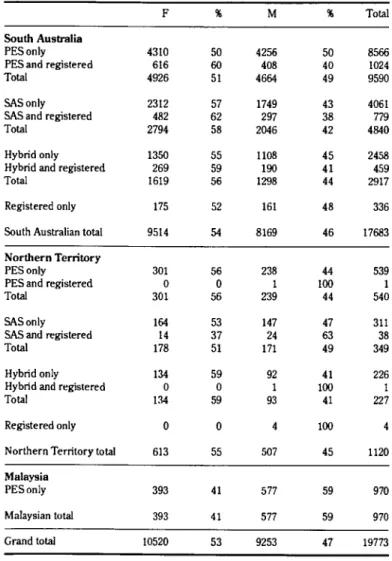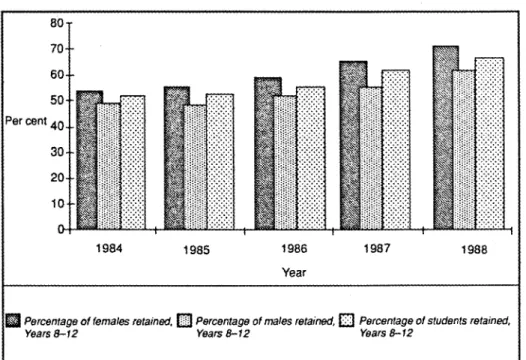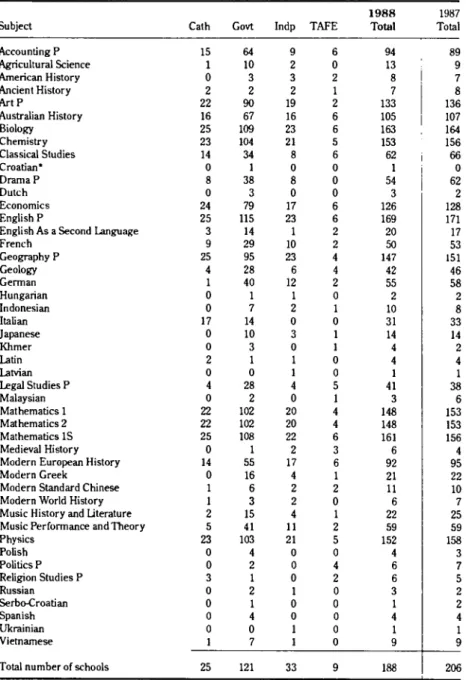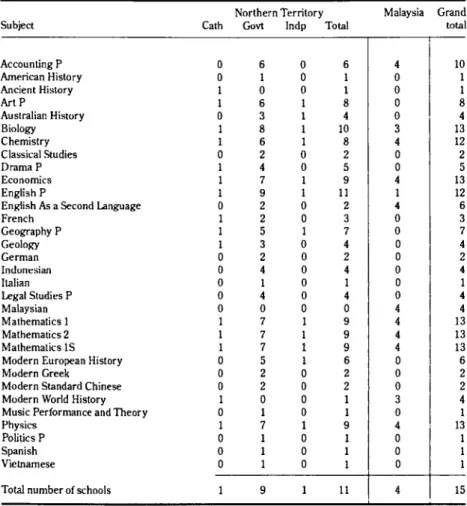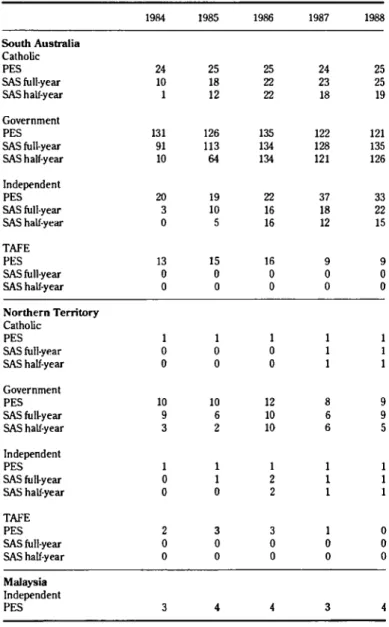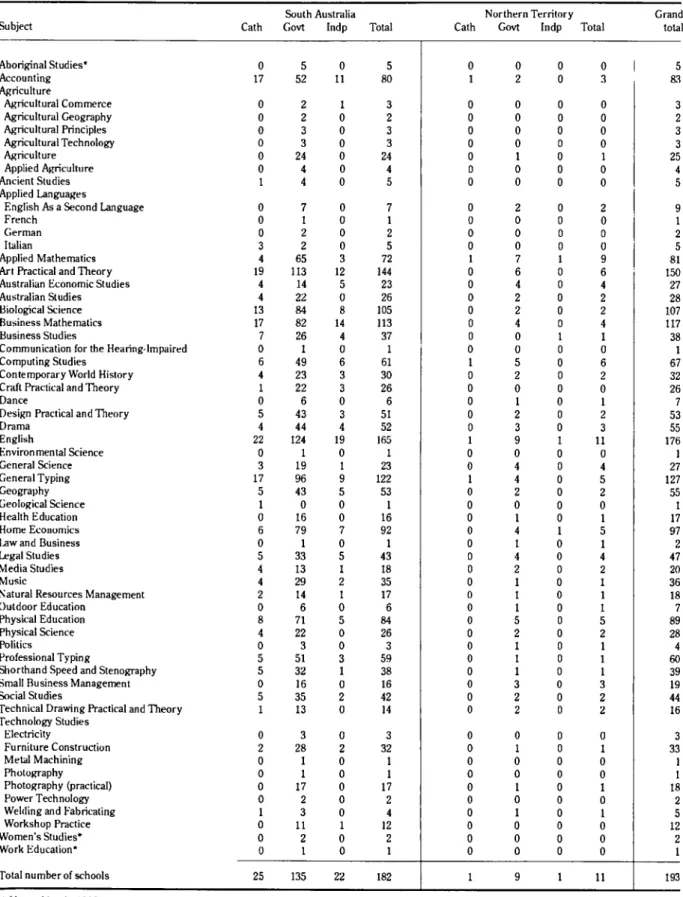I would like to express the gratitude of the Board to all these people whose combined efforts have benefited secondary education in this country. The Committee continued to work with the Inquiry into Immediate Post-Compulsory Education and acknowledges the work of the Ministerial Adviser, Mr. by Kevin Gilding. I sincerely thank the Board of Directors to all these retired members for their special contribution to the concept of general higher secondary education.
The following sections of this report provide details on the implementation of policies designed to meet this first objective. SSABSA has also undertaken research into the effects of scaling publicly investigated subjects as a result of the Gilding Report. SSABSA is aware of the tension between providing for everyone's needs and leading.
Another important development in 1988 was the implementation of the decision to abandon private candidacy. For more details of the assessment process, see pages 70 to 72 of the SSABSA Year 12 Handbook.
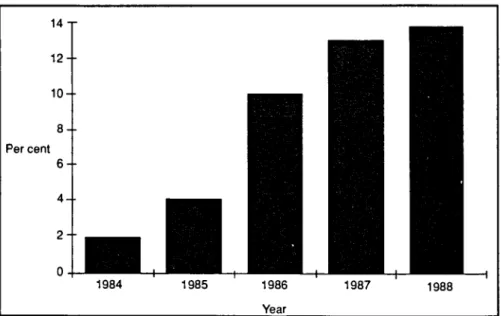
PARTICIPATION AND EQUITY
New arrangements arising from the Report of the Inquiry into Immediate Post-Compulsory Education may lead to an expansion of SSABSA's role in employment. In early 1988, SSABSA published Participation and Equity Guidelines for Evaluation and Redevelopment of Year 12 Syllabus. Expanding the range of syllabuses to meet the needs of a more diverse clientele has increased participation in Year 12 schooling.
The range of accredited subjects, flexible assessment methods and policies designed to increase access and participation are key resources through which SSABSA caters to all Year 12 students. They are available to students taking accredited courses and also to students taking registered courses only. A review of registered subjects in 1988 led to a substantial rationalization and consolidation of the range of subjects offered in schools.
Registered subjects are now available as system-registered subjects (available to any school) or as school-registered subjects. limited to the developing school). There will be fewer than 250 registered subjects available in 1989 - a significant reduction in number but an improvement in quality.
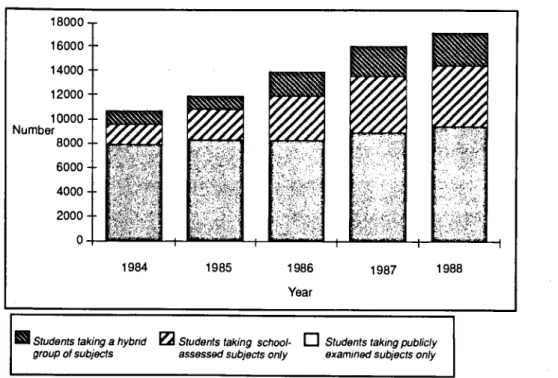
INFORMING THE COMMUNITY
SSABSA believes that the expanded range of subjects is one such factor, the other being more flexible assessment practices. However, there is an additional factor that provides opportunities for students who would otherwise not. The nature of the committee system also ensures that SSABSA's policies and activities are open to the public.
For example, the new Dance Performance and Theory syllabus was introduced at Carclew and Year 12 week was extended to Senior Student Week, a joint operation with the Commonwealth Department of Employment, Education and Training, DTAFE, and the secondary school systems. At this ceremony, more than 500 South Australian students who achieved scores of 20 out of 20 in at least one subject in 1988 will receive their merit certificates. The information on the Year 12 achievement certificate itself (see section 2.4) is another way of keeping the public informed.
The SSABSA Year 12 Certificate of Achievement is now known and respected throughout Australia; it is not only the south that uses it. Australian students, but also over 2000 students a year from the Northern Territory and Malaysia.
SUMMARY
Senior Students' Week has become a focus in many schools (128 in 1988) for year 12 advice, further studies and career planning.
FINANCIAL STATEMENT FOR THE YEAR ENDED 31 DECEMBER 1988
To the best of our knowledge, the previous financial statements and notes thereto give a true and fair view of the Board's financial transactions for the year ended December 31, 1988 and the state of affairs as at that date. In accordance with the Senior Secondary Assessment Board of South Australia Act, I have audited the accounts and financial statements of the Senior Secondary Assessment Board of South Australia in accordance with Australian auditing standards. In my opinion, the accompanying financial statements, together with the notes thereto, give a true and fair view of the transactions for the year ended 31 December 1988 in accordance with Australian accounting standards.
Organisation of the Board
THE BOARD AND ITs COMMITTEES
THE AUTHORITY
Librarian Senior Administration Editor (CI-6) Senior I Computer Evaluation. LIB 3) and Finance 0.6 FTE Systems Officer Services.
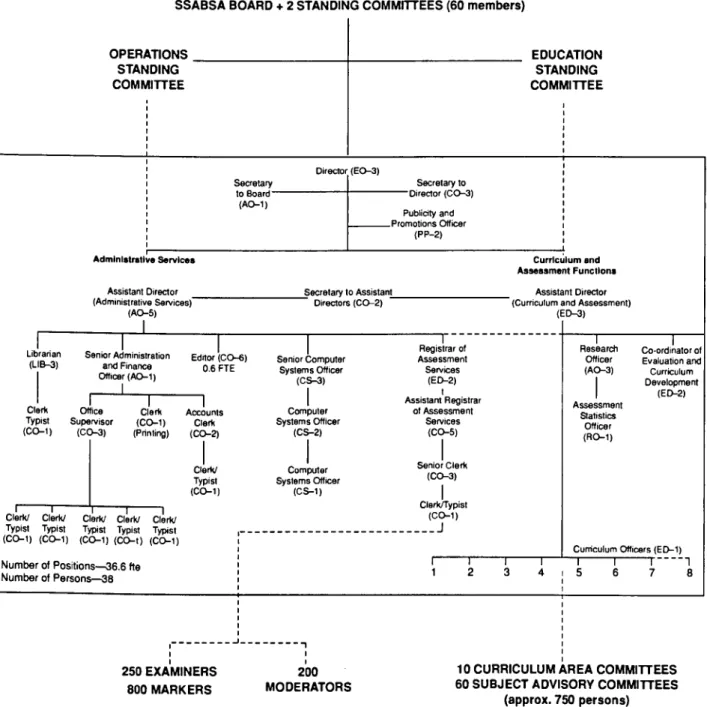
Members of the Senior Secondary Assessment Board of South Australia, as at 31 December 1988
Staff of the Senior Secondary Assessment Board of South Australia, as at 31 December 1988
Committee Lists, 1988
COMMITTEE STRUCTURE
STANDING COMMITTEES
CHIEF EXAMINERS, 1988
CHIEF MODERATORS, 1988
CURRICULUM AREA COMMITTEES
SUBJECT ADVISORY COMMITTEES
I Social and Cultural Studies CAC I -- Aboriginal Studies SAC I. I Classical Studies/Ancient History SAC Ancient History. Modern European History Modern World History --I Legal Studies SAC I. 1 Media Studies SAC I I Politics SAC I. in Religious Studies SAC I Religious Studies Religious Studies P. I Social Studies/Sociology SAC I Social Studies. I Computer Studies SAC I --I Technology Studies SAC 1. IWork, Leisure and Lifestyle CAC I. Social Studies SAC I --I Health Education SAC I. I Sports SAC I --I Work Education SAC I. Herman is Ho Honorary Chin Mr G. Ms K. Farnan Ms A. Forster Mr J. Glasby Dr N. Harvey Ms S. Harwick Ms A. Hodgson Mr I. Plisko Mr).
Mr Bun Thon Kang MrBunchhong Mann Mr Chhay Søn Ms J. Kong Mrs Lean Hor Så Dr Meng Prøv Ea Mr Phann Pech Mrs Sophoap Distasio Mrs C. Mr Yos Hut Khemacaro Mrs W. Ms S. Christensen Mrs G. Passmore Mrs J. Riccio Ms M. Vervoorn hr.). Fru Nguyen Thi Than Hong Hr. Nguyen Van Hau Hr. Ta Duy Son Hr. Tran Dac Tri Hr. Tran Quoc Hung Sr. M.
Accredited Subjects, 1988
PUBLICLY EXAMINED SUBJECTS
SCHOOL-ASSESSED SUBJECTS
Outdoor Construction Photography (Practical) Plastics Technology Power Technology Technical Graphics Technology and Society Welding and Fabrication Workshop Practice Women's Studies Work Education.
Prize Winners, 1988
APPENDIX VII Merit List, 1988
Rammy Abu-Assi
Kym Michelle Hendy Martin Ronald Jericho Samuel Arthur Latz Ricky Wing Fung Lau Paul Craig Leverenz. Todd Michael Maddenn Brenton Clifford Millard Lisa Marie Moffatt Peter Tobias Muller Thanh Quan Nguyen Tracey Janet Nixon. Michelle Patricia Northcote Heath Bland O'Connell David William Pfitzner Philippa Jane Rabbitt Christian Paul Schach Darrin John Smith Boon Kai Teh.
Stuart Gordon Yates MATEMATIKA 2 Timothy John Baldwin Michael Jeffrey Bone Jane Louise Brown Matthew Ross Brown Simon John Cameron Brenton Shane Cooper James Edwin Dickson. Thanh Quai Nguyen Michelle Patricia Northcote Heath Bland O'Connell Stephen John Patterson David William Pfitzner Christian Paul Schach Boon Kai Teh. Rimute Ina Daugalis Michael John Deconti Stefano D'Onise Malene Felsted Michael John Filsell Christine Renata Frewin Ping Ping Goh.
Claudine Shemin Law Diana Macolino Katherine Helen Moore Patricia Margaret Ryan Helen Fiona Strachan GREQI MODERN Soteroula Christou Maria-Simone Edmonds Elizabeth Panagiota Georgiades. Matthew Ross Brown Simon John Cameron Timothy Yu-Wing Cheng Brenton Shane Cooper Stefano D'Onise Mark Thomas Elford Nicolas Fejer. Man Chung Lin Brett Norman Lorraine Paul James Low Todd Michael Maddern Lisa Marie Moffatt Thanh Quan Nguyen Michelle Patricia Northcote Heath Bland O'Connell Stephen John Patterson David William Pfitzner Braden Jace Phillips Patricia Poon.
APPENDIX VIII
7hй can include both public exam subjects and school-assessed subjects, half-yearly and half-yearly.
